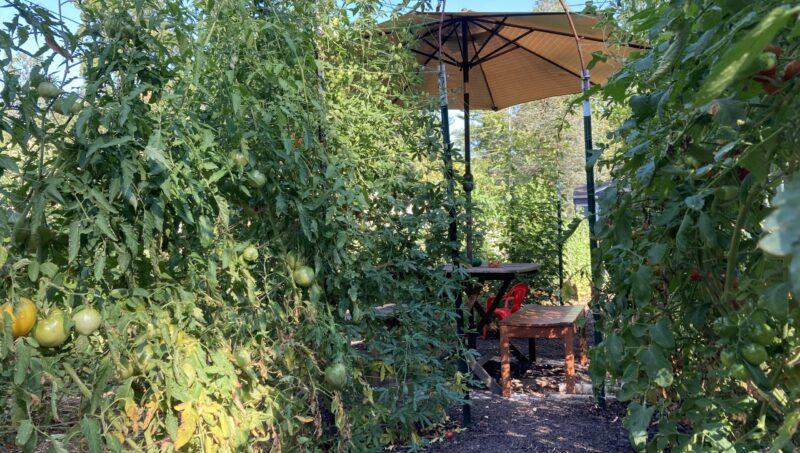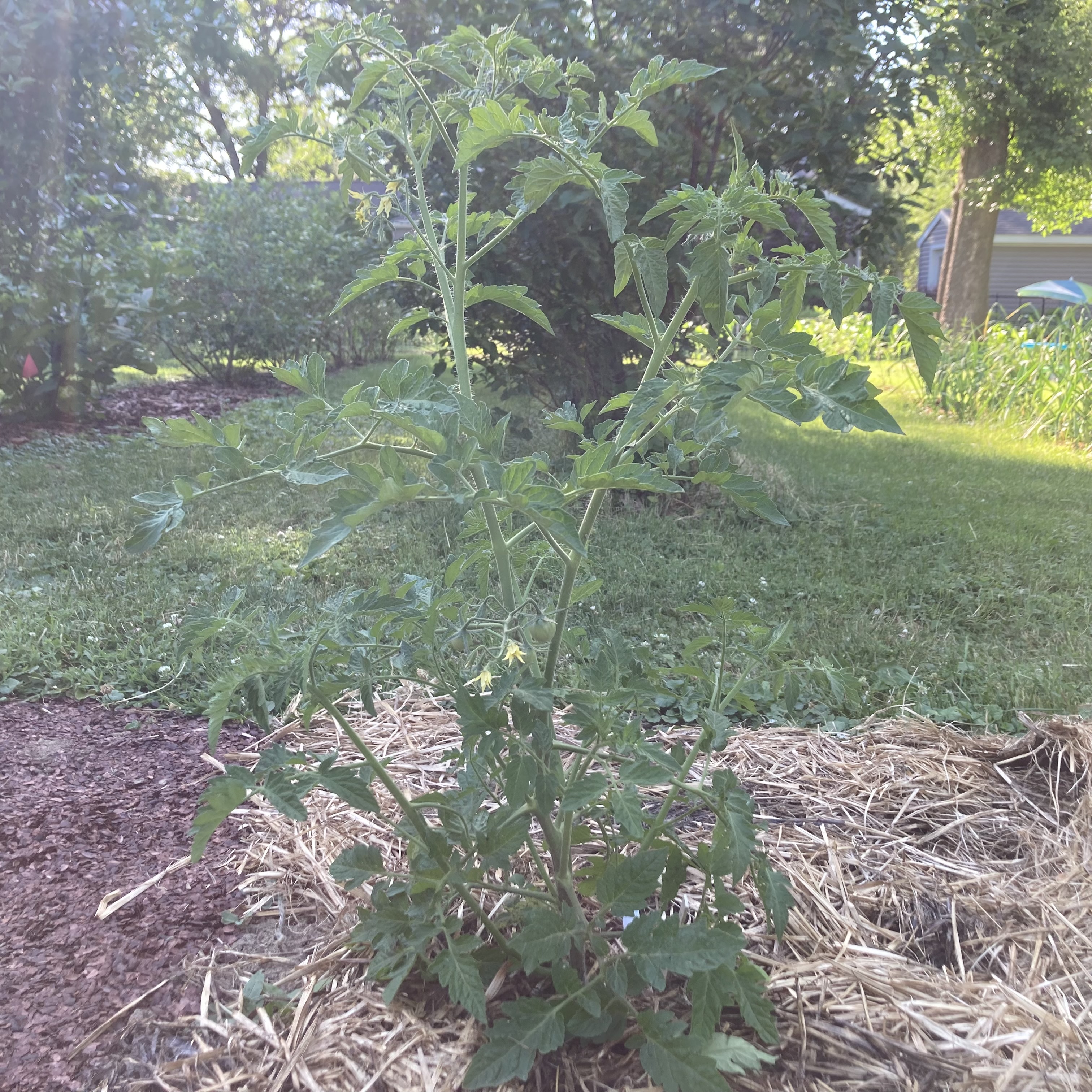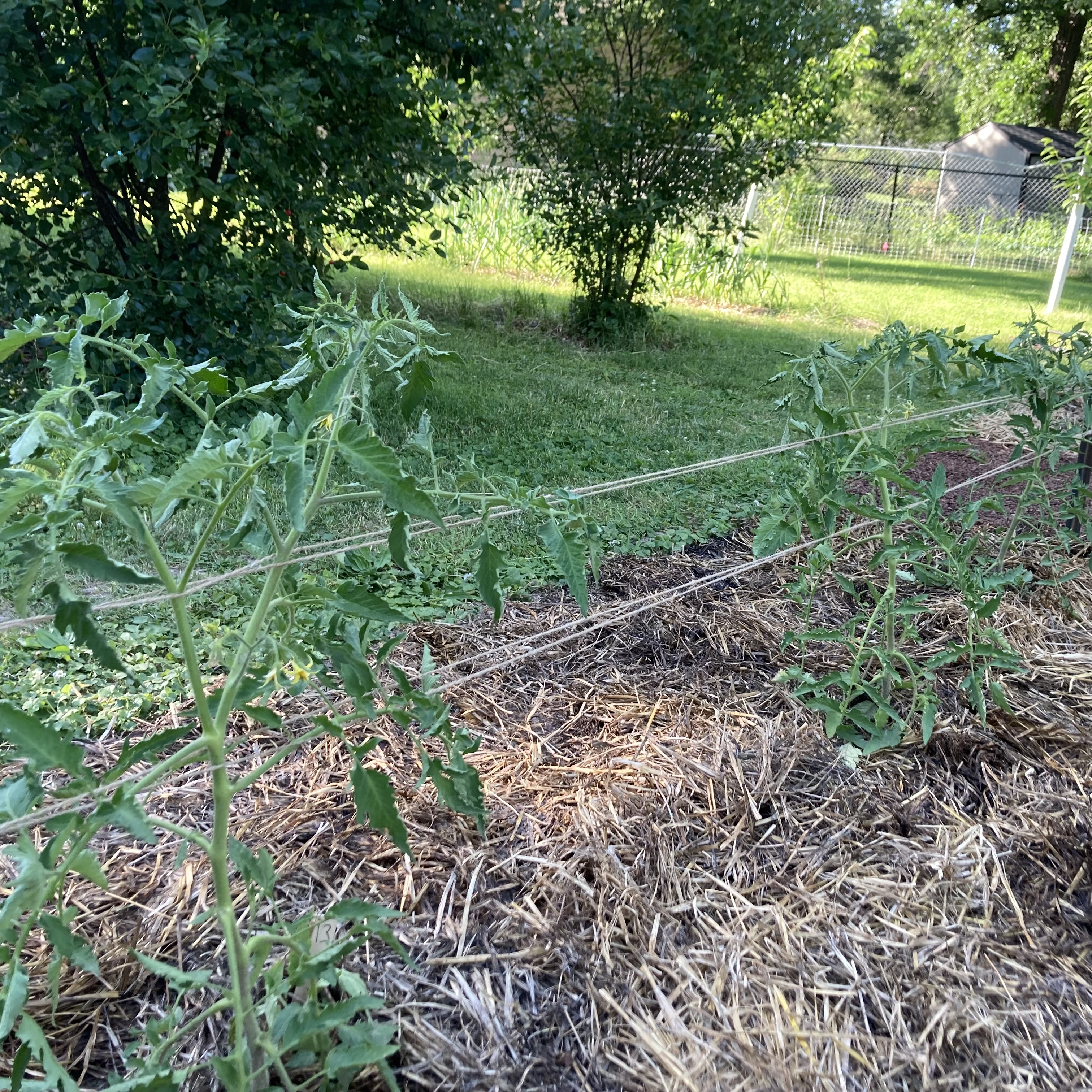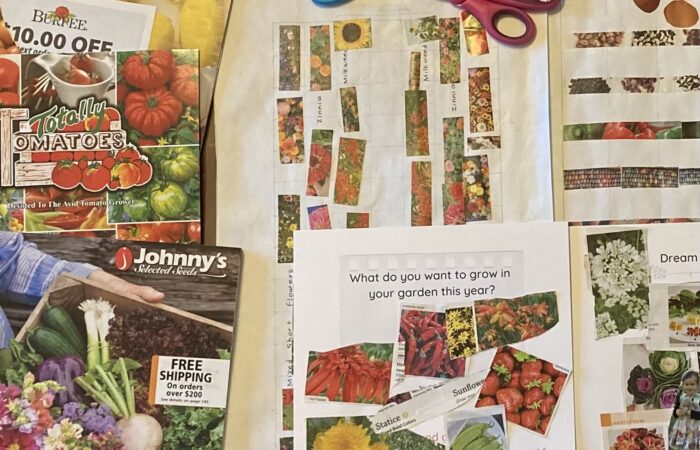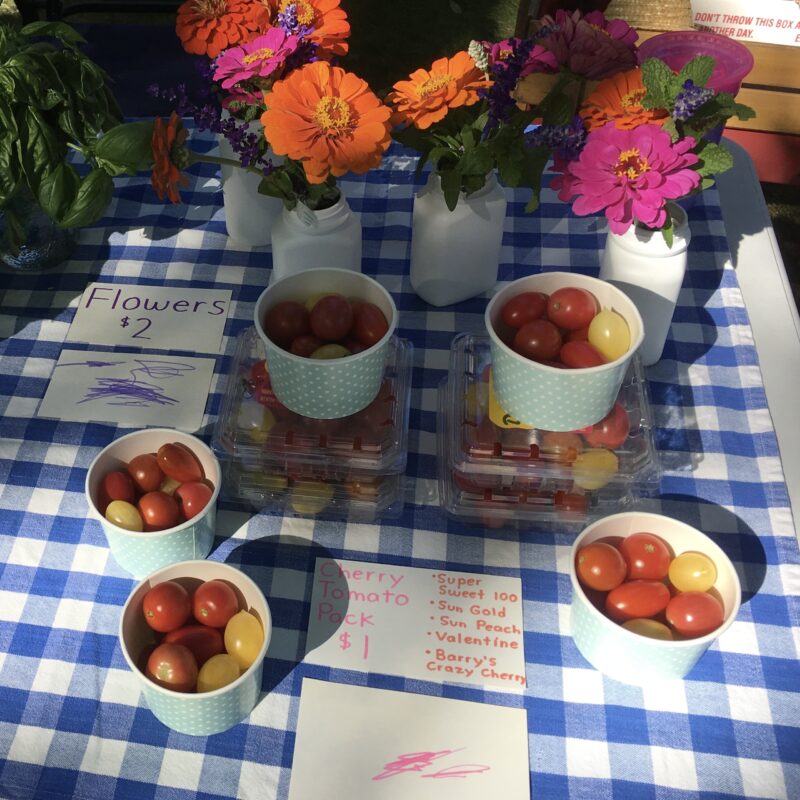Tomato Walls: How We Prune and Tie/Weave Indeterminate Tomatoes
We prune and tie/weave our indeterminate tomatoes so that they will grow as tall walls, getting 6-7 feet tall. They will create an enchanting space as they grow taller through the season. Not only do they create a magical space in the garden, we have also noticed these other benefits:
- Better airflow between leaves and branches
- Increased fruit production
- We can reach the tomatoes better to harvest
- Branches and plants don’t fall down or break
The picture above is from the end of the summer, August 30, 2020.
The video below shows what the same garden looked like on July 24, 2020, standing on the inner part of the garden (which we call the “hexagarden”).
Tomatoes are categorized either as determinate or indeterminate. Determinate means that they grow to a certain size and then stop. Sometimes these determinate plants produce the fruit in a short period of time. Indeterminate means that they keep growing throughout the season, like a vine. We grow indeterminate because we like that the tomato plants grow tall! The pruning method that we use would not work well with determinate plants because you want all of the fruit you can get in the short period of time that they are producing. You can check the seed packets to see which type you are growing if you still have those available.
By slowing down and observing the plants as I prune and tie/weave, I get to “know” and appreciate the different growth patterns of the tomato varieties. I genuinely enjoy this time because it’s relaxing and meditative to focus on a specific task. If the girls are with me I can do the pruning in short bursts in between different songs, activities, hide-and-seeks, etc. The tying is a little harder to do in short bursts because once you start tying/weaving it’s harder to stop midway.
In order to know what to prune and what to keep, it will help to have some common language so that these directions make more sense.
My goal in pruning is to keep nice thick and healthy growing stalks, or main plant stems, about a foot apart. I keep all of the leafy branches and flower/fruit clusters. I prune most suckers knowing that they will turn into growing stalks that will compete and crowd out the plant. It may seem like you are pruning too much at first until you get used to the process and the plants’ growing patterns. In my experience the low suckers that come out of the base near the ground end up breaking off or cracking eventually, so I take those out too.
Once I have pruned, I use the jute twine to weave back and forth, in and out the branches of the tomatoes t0 create supports for the plants. I start by tying the twine to a t-post, which we pound in on the ends of tomato rows about every 2-3 plants. Then I weave the twine towards the next t-post, first going to behind a branch and then going to the front of the next branch. I wrap the twine around the t-post when I get to the end of that row segment and then go back the other direction going the opposite way as before. If the twine went behind the branch as I went down the row before, then I go in front of it this time to create a weave. It helps to do this with a partner at first! The very last task I did in the garden before delivering our second baby was tying tomatoes with my husband!
I wish I could show in person how I prune and tie, but I did the next closest thing… I made a video to show how I prune and tie in case you like to see things explained more in detail – that’s how I learn best.
What questions do you have about how we prune and tie? How do you manage your tomatoes?
